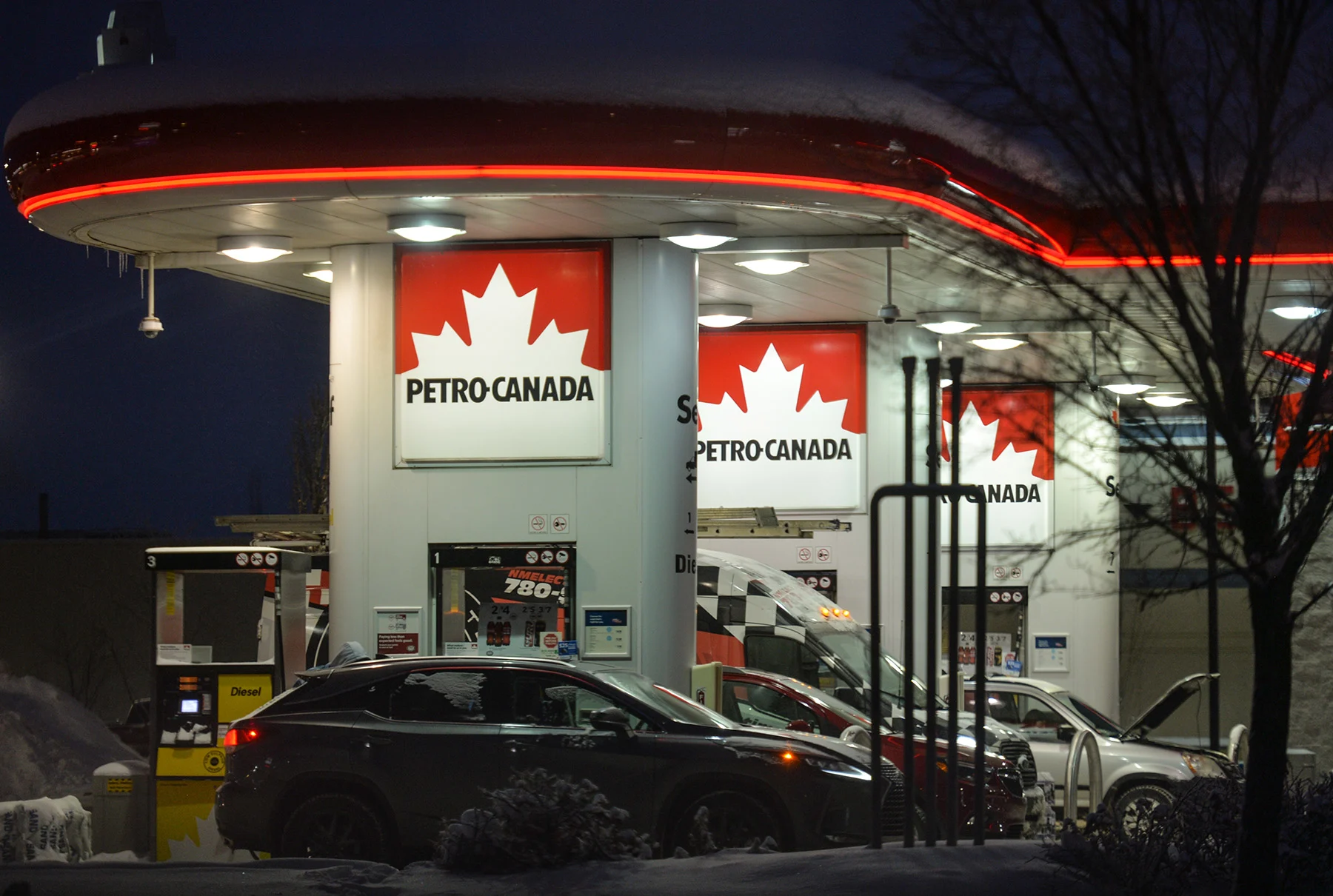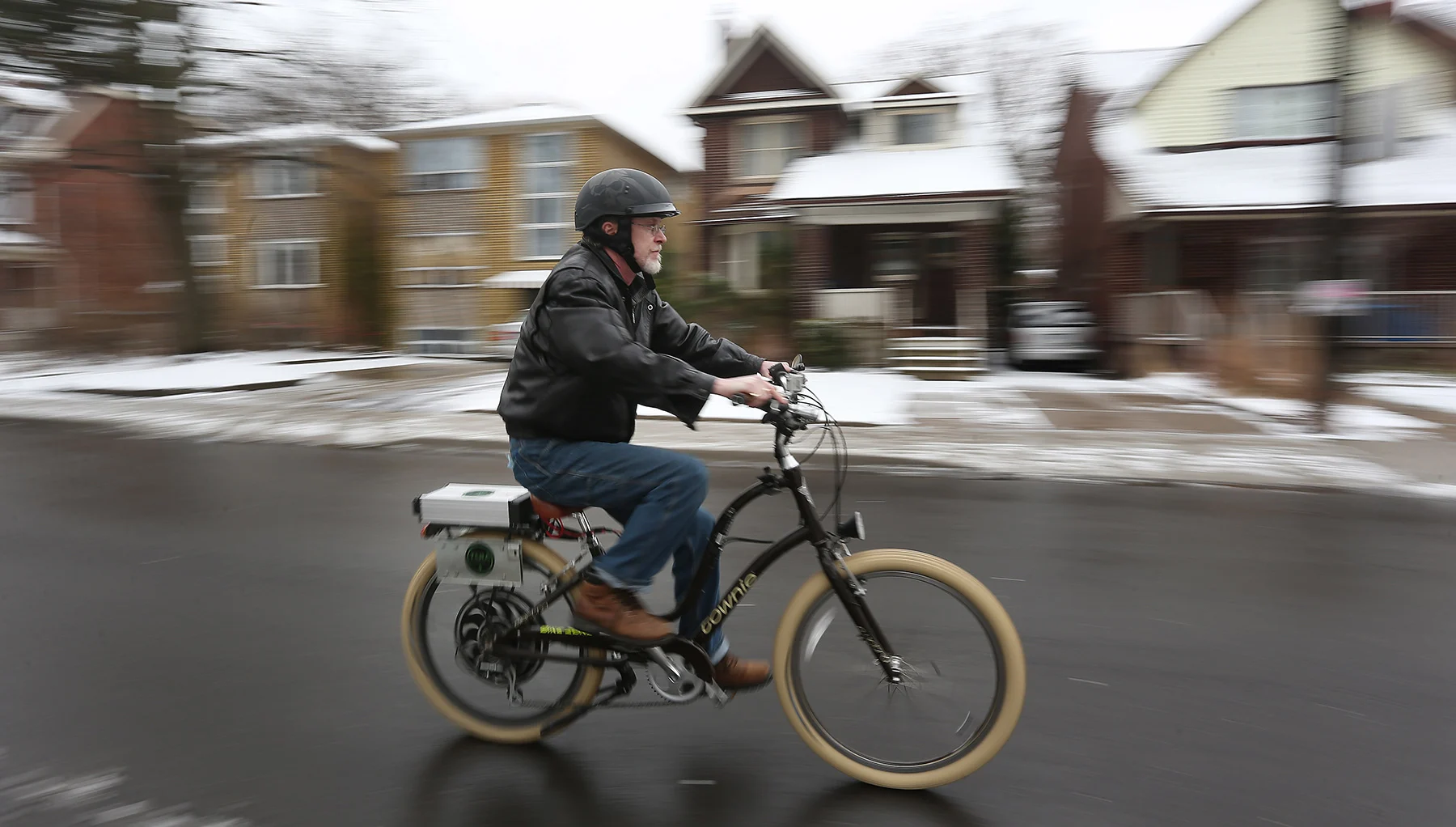
Where does the money from the carbon tax go?
Recent hike to the federal carbon tax prompts questions about how the tax — carbon pricing — is used.
The federal carbon tax rose as scheduled at the beginning of the April, capping weeks of near-record-high gas prices.
On April 1st, the gas levy rose 2.2 cents per litre and now costs most drivers 11 cents per litre at the pumps.
At the best of times, the carbon tax is a hotly debated political issue, with some calling it no more than an unfair way to hit consumers’ pocketbooks and others insisting it is a necessary tool in the fight against climate change.
With the sky-high gas prices of late, the role that the Ukraine war has played in the energy crunch, and some provinces like Alberta and Ontario announcing cuts to their own provincial gas taxes, the volume has only gone up on the carbon tax issue.

Daily life at a Petro-Canada gas station in Edmonton during the COVID-19 pandemic. (NurPhoto/ Contributor/ Getty Images)
Minister of the Environment, Steven Guilbeault, found himself defending the role of gas taxes as he criticized the choices by some Premiers to trim theirs, stating that such backpedaling worked against the climate change fight.
He called the cuts “short-term” and “the easy solution,” adding that “climate change is killing people in Canada.”
The irony is that Guilbeault’s federal government just announced approval for a massive new fossil fuel production project — the $12 billion offshore drilling facility awarded to a Norwegian company to drill for oil 500km off the coast of Newfoundland.
Known as the Bay du Nord project, it will have no impact on Canada’s aim to increase oil exports by the end of the year to prop up a struggling global supply. The new offshore drilling facility would not even begin pumping oil until 2028.
The Bay du Nord project is to be carbon net zero by 2050, but the regulation does not account for the hundreds of millions of barrels of oil the wells will produce to be burned over its lifetime.
Arguments for the efficacy of the carbon tax (though there is disagreement on this front), and against temporary relief at the pumps for consumers, lose steam in the face of the Bay du Nord project which flagrantly undercuts long term climate goals while also failing to address the short term energy crisis.
The tax might be less politically contentious, as reported on previously, if there was a better understanding among consumers that it is not a cost but a windfall, with most Canadians (80 per cent) receiving more in rebates than they pay out.
Some of that clarity will come this year, as the federal government will begin mailing out cheques rather than merely listing the rebate some Canadians receive on their tax return.

Doug Beatty, president of the Toronto Electric Riders Association, rides his bike on his street in Toronto. (Steve Russell/ Contributor/ Toronto Star/ Getty Images)
It’s important to remember that only four provinces — Ontario, Alberta, Manitoba, and Saskatchewan — operate under the federal carbon tax as it applies to the price at the pumps (and on home heating).
So what happens with this money?
“For the federal fuel levy, all revenues are returned to the province from which they were collected,” Kathryn Harrison, professor of Political Science at the University of British Columbia, told The Weather Network.
“Ninety per cent is returned to individuals in the form of rebates — the same amount for households of equal size, though there’s a slight bump (10 per cent extra) for rural households. The remaining 10 per cent is used to directly support municipalities, schools, hospitals, universities, which also pay the tax but don’t get rebates via income taxes,” Harrison added.
This is the reason some international studies of the Canadian fuel levy system have termed it “carbon neutral.”
But there remains some incentive baked into the program. Because consumers receive the same amount in rebates (based on demographics), those who do cut down on their fossil fuel consumption will come out on top by paying less for gas over the year.
“The rebate for a family of four is the same whether they have a heat pump and e-bikes or a gas furnace and own multiple gas-guzzlers,” Harrison said.
“A household with a high carbon footprint can save money by driving less, or switching to an EV or getting a heat pump, without it affecting their rebate,” Harrison specified.
“The whole point is to create financial incentives to reduce fossil fuel consumption, and that’s still in place as long as the money is returned independently of each household’s individual carbon tax bill.”
It was also announced back in February that some of the revenue garnered from the carbon pricing levied on the industrial sector — $161 million — will be reinvested directly into “initiatives that reduce greenhouse gas (GHG) emissions and deploy clean technology and green energy.”
Thumbnail credit: Antonio Marquez lanza/ Moment/ Getty Images






